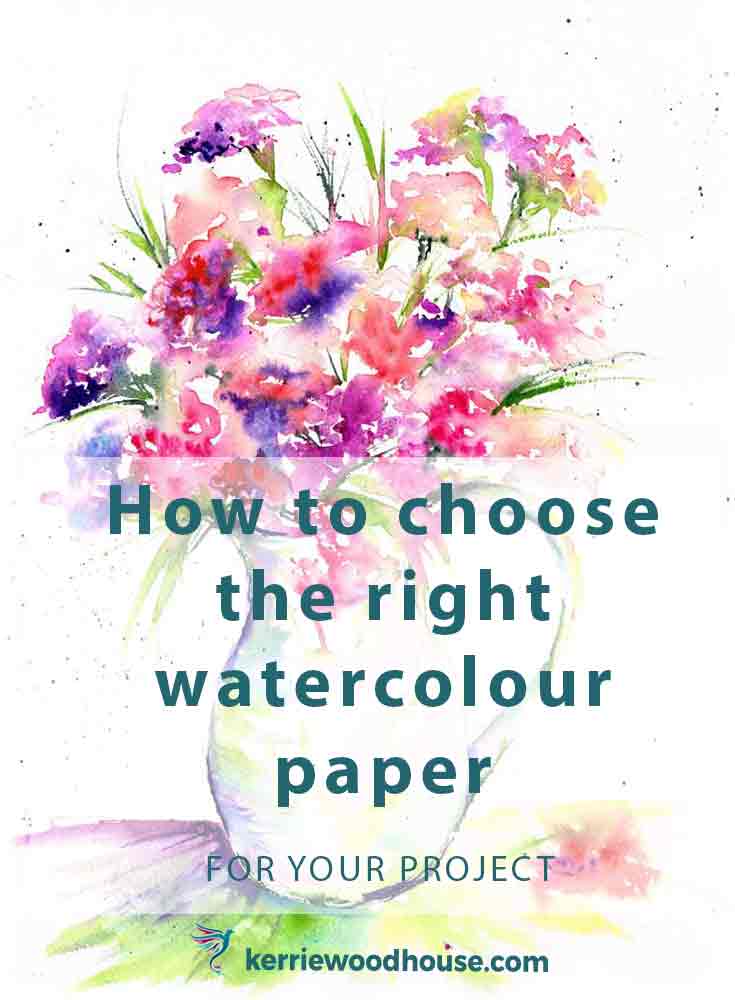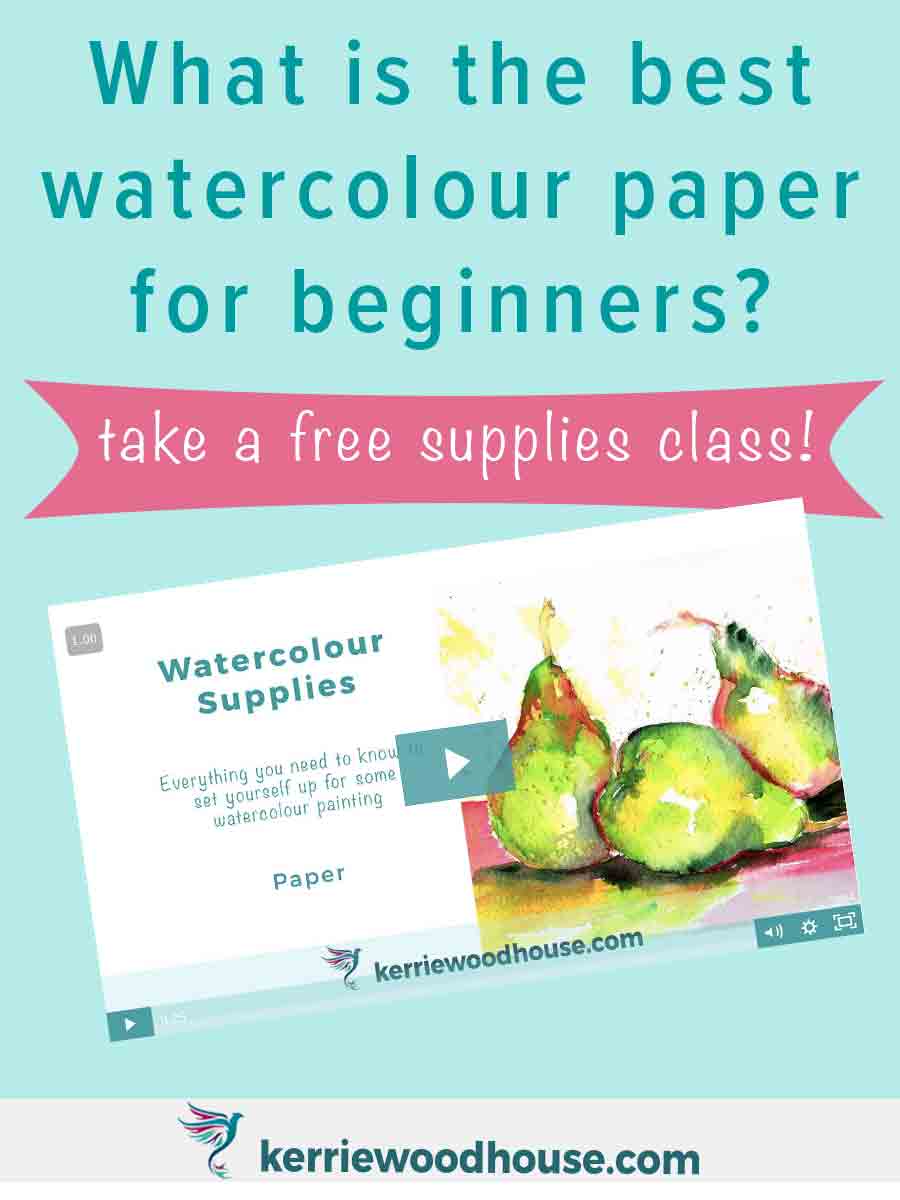Which watercolour paper should you choose?
If you are anything like me you have a box of watercolour paint and you can't resist splashing a bit into your sketchbook. This gets you thinking about 'proper' watercolour painting. Is sketchbook paper good enough?
Yes and no. It really depends on your expectations. Water will make your paper buckle and it can pill easily if you start trying some watercolour techniques like colour lifting and masking. But working in a sketchbook is low pressure and there is a lot to be said for that. Playing with watercolour in a sketchbook is a great way to start but look what happens to my favourite daily sketchbook pages.
Because it is my sketchbook I am totally okay with that. But, if you do want to go a little further with your watercolour paints you do need to think about paper. So here is what I think you need to know before you set off for the art supply store.
(By the way, I have a whole class on watercolour supplies for beginners - and it is free… want to take a look?)
Texture
There are three common surface textures for watercolour paper.
Hot pressed
Hot pressed paper is the smoothest option. The easy way to remember this is to think of a hot iron smoothing out the surface of the paper - for this is pretty close to how the paper is made. Mixed media artists often favour hot pressed paper as do some illustrators or painters who incorporate fine details into their paintings.
Cold Pressed
So what is paper that has not been hot pressed until it is smooth? It is NOT. No really, that's what they call it, as in not hot pressed. Sensibly, it is also referred to as cold pressed. The surface of the paper has been flattened, but not under heat so there is still some texture which I find is a little bit more forgiving to a new watercolor painter.
Rough
Rough paper, as you have probably guessed, has the most texture and this provides for some lovely interesting effects as the watercolour paint pools and granulates in the little hollows of the paper. This is becoming my favourite type of paper because I like loose paintings and use a lot of wet into wet mark making.
Weight
Watercolour paper is available in different thicknesses which are described as weights. Depending where you are in the world this will be described in terms of either pounds (lb) or grams per square meter (gsm). Thinner paper handles less water and buckles easily. The heavier the paper is, the more water it will take and the less likely it will be to warp and cockle. While there are many different variations available across different manufacturers the three most commonly used paper weights are:
90lb or 190gsm
This is very light paper, slightly thicker than sketchbook paper and will have to be stretched or mounted to avoid the buckling. It is a less expensive option that still allows you to benefit from the properties of watercolour paint, but to be honest I think if you are going to spend money on watercolour paper I would go for the 300gsm or just stick to a sketchbook.
140lb or 300gsm
This is my go to paper weight for proper watercolour painting (as opposed to sketching). It feels like thick card and can put up with the lifting, scrubbing etc that I might end up doing. However it is still flexible so you can roll it into a tube if you are posting a finished painting somewhere. And if you do a painting you don't love you can actually use the back of the paper and that might make you feel a bit better about the value you get for your money.
Many artists will stretch this paper which involves wetting the paper completely (like in the bathtub) and the then stapling or taping it (with the appropriate tape) to a rigid surface to dry before painting. Well... that is way too hard for me. One of the reasons I love watercolour is that it is low maintenance - easy prep, easy clear up. If I have to do all this before I begin that would rule watercolour out of my studio as I am not a patient person.
Another option is to tape the dry paper onto a rigid surface with artist tape or even packing tape. This will leave you with a nice clean white border around your finished painting when you remove the tape and helps to reduce the warping of the paper while you are painting.
I do tape down my paper sometimes but I seem to be adopting the buckled paper into my loose style... well, that's my story, anyway. If you like more precise, detailed botanical style paintings then you may wish to investigate paper stretching, or choose thicker weight paper or make sure you choose the right format (blocks) which I will get to shortly.
300lb or 638gsm
This is very thick and consequently quite inflexible. I find it so intimidating (and expensive) that I don't use it at all. However with paper this thick you really will be able to minimise the buckling of the paper without the need for stretching or mounting the paper before you paint.
Format
If simplicity is your thing then you probably want to buy your watercolour paper in a pad. Watercolour pads are available in all sorts of sizes so this is a most convenient option. You will also see blocks instead of pads. A block is a pad that has been gummed nearly all the way around instead of just on one edge. This means the paper is automatially stretched for you. You can just remove the finished painting (when it is completely dry) by slipping a palette knife into the little ungummed space and sliding it around the edge to slice it off the block. The downside is that you can only work on one sheet from the block at a time of course.
Large sheets of watercolour paper are available usually 56cm x 76cm. The advantage here is that you get to choose your painting size by trimming the paper down to your custom requirement. The disadvantage is that you have to trim the paper down to your required size. I'll leave that to you to way up.
If you are really committed, you can buy a whole roll of watercolour paper. This works out cheaper in the end if you are prepared to make the investment up front. And of course everything I just said about trimming the paper down to custom size applies again.
Artist or student grade
It does seem that you get what you pay for with watercolour paper. There are student quality and artist quality versions available in most brands. The difference is in the materials that are used and production processes. Key words to look for if you are looking for better quality paper include:
acid free - this means that the paper has the right Ph balance to prevent yellowing and deterioriating as the painting ages
%cotton - the higher the percentage of cotton fibres (or rag) the stronger and more pliable the paper will be
In Conclusion
Ultimately, choosing the right paper for your project is a very personal decision. It is important to think about the purpose and longevity of your project and balance that with the amount you are prepared to spend.
I am finding that nice paper can completely change your painting experience. Exactly what you think is 'nice' paper will probably come down to a good deal of trial and error to find what suits your style.
So go forth and experiment.
What fun...
Find out all you need to know about watercolour supplies in this free class













